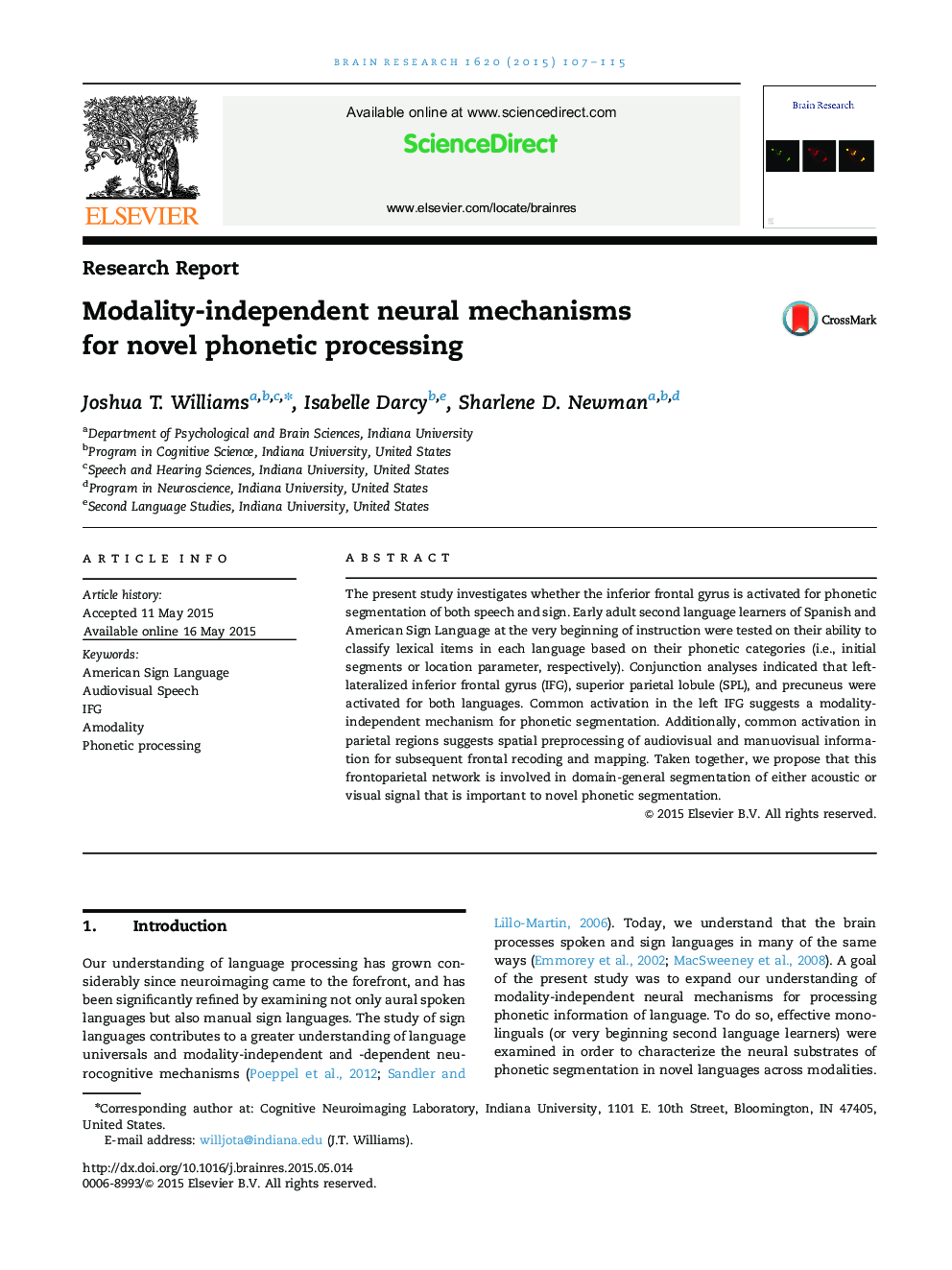| Article ID | Journal | Published Year | Pages | File Type |
|---|---|---|---|---|
| 6262979 | Brain Research | 2015 | 9 Pages |
â¢L2 phonetic discrimination was examined in spoken and sign language.â¢Left IFG, SPL, and precuneus were activated for both languages.â¢L-IFG activation suggests modality-independent mechanism for phonetic segmentation.â¢Parietal activation suggests spatial preprocessing for frontal recoding.
The present study investigates whether the inferior frontal gyrus is activated for phonetic segmentation of both speech and sign. Early adult second language learners of Spanish and American Sign Language at the very beginning of instruction were tested on their ability to classify lexical items in each language based on their phonetic categories (i.e., initial segments or location parameter, respectively). Conjunction analyses indicated that left-lateralized inferior frontal gyrus (IFG), superior parietal lobule (SPL), and precuneus were activated for both languages. Common activation in the left IFG suggests a modality-independent mechanism for phonetic segmentation. Additionally, common activation in parietal regions suggests spatial preprocessing of audiovisual and manuovisual information for subsequent frontal recoding and mapping. Taken together, we propose that this frontoparietal network is involved in domain-general segmentation of either acoustic or visual signal that is important to novel phonetic segmentation.
